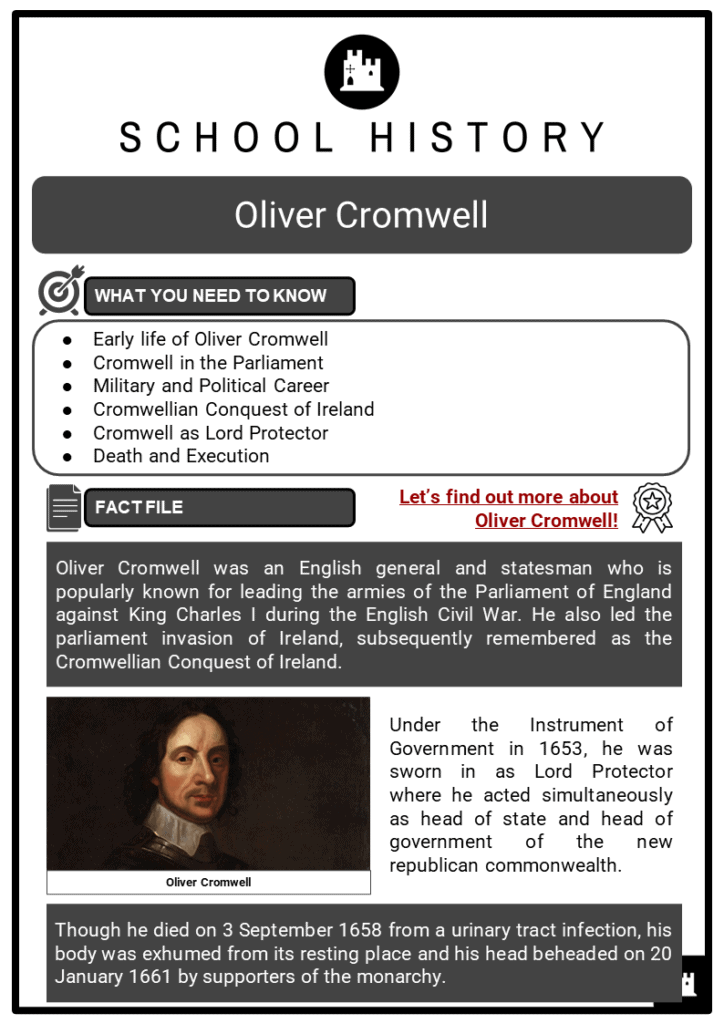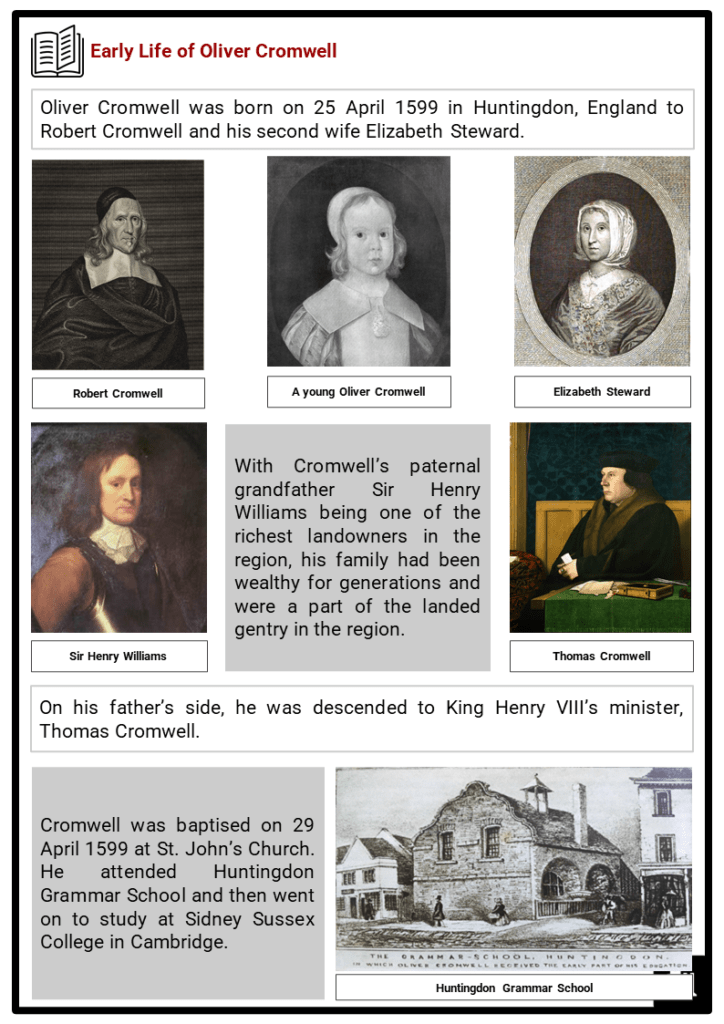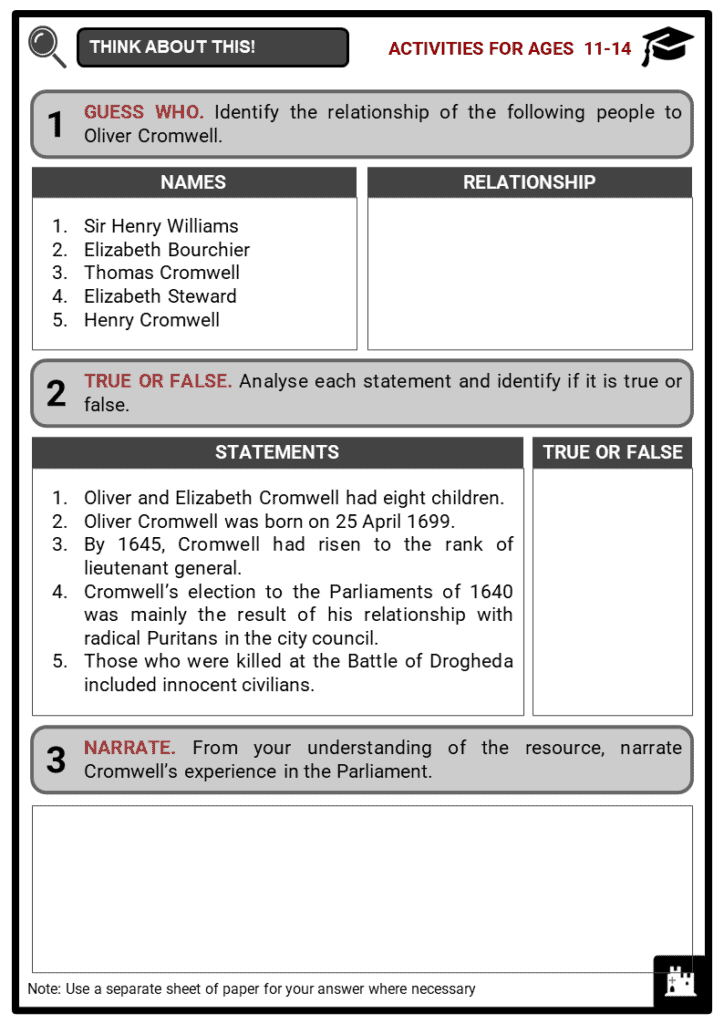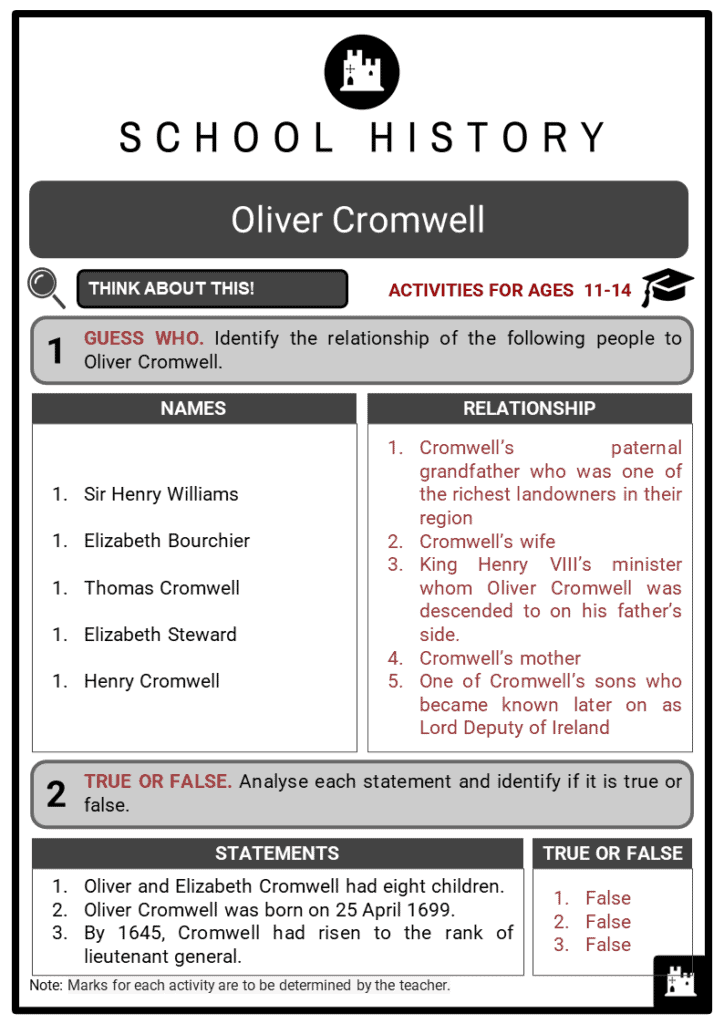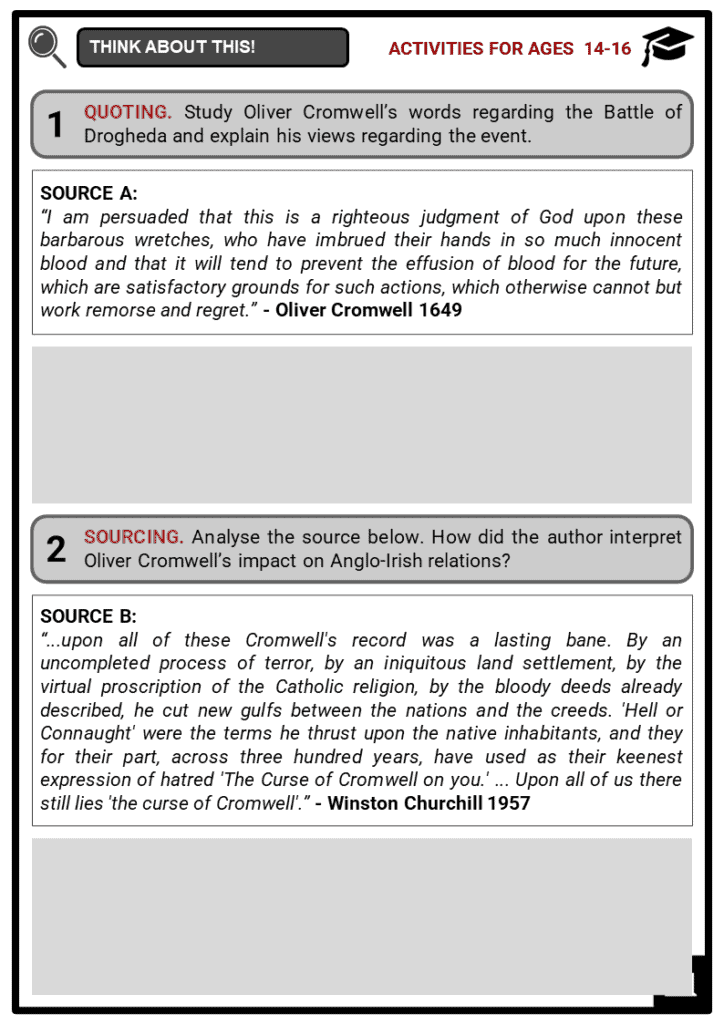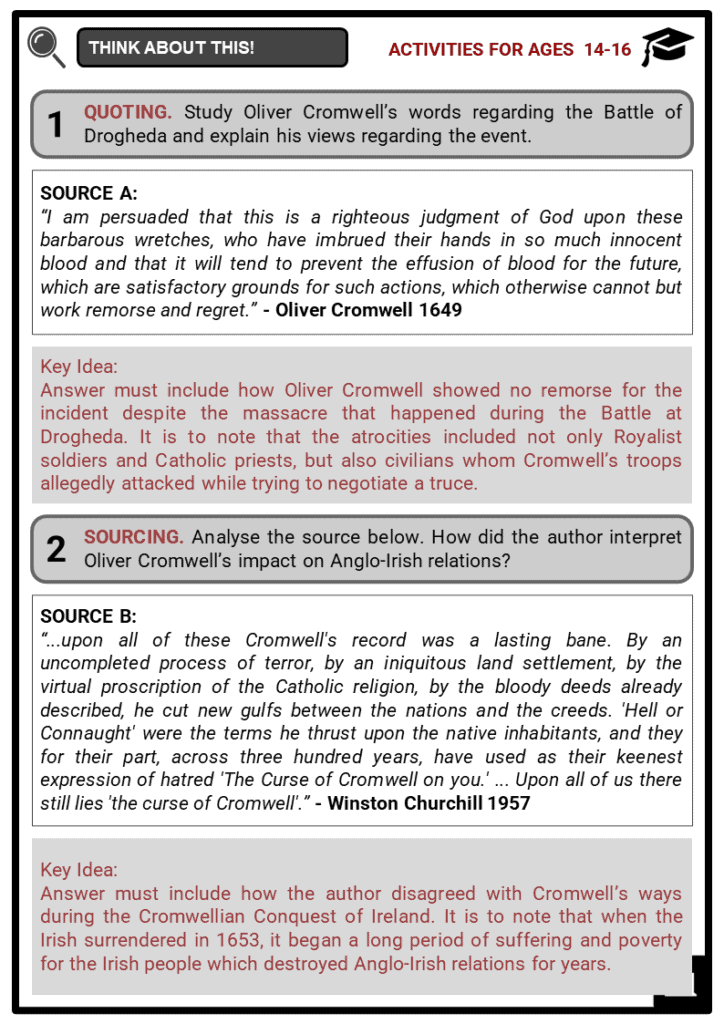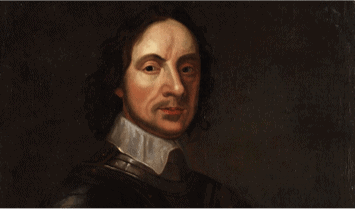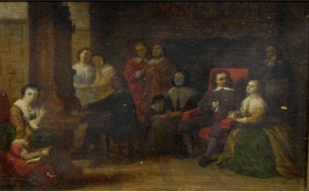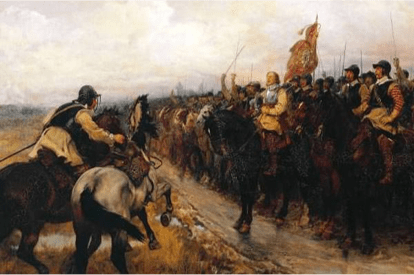Download Oliver Cromwell Worksheets
Do you want to save dozens of hours in time? Get your evenings and weekends back? Be able to teach Oliver Cromwell to your students?
Our worksheet bundle includes a fact file and printable worksheets and student activities. Perfect for both the classroom and homeschooling!
Table of Contents
Add a header to begin generating the table of contents
Summary
- Early life of Oliver Cromwell
- Cromwell in the Parliament
- Military and Political Career
- Cromwellian Conquest of Ireland
- Cromwell as Lord Protector
- Death and Execution
Key Facts And Information
Let’s find out more about Oliver Cromwell!
- Oliver Cromwell was an English general and statesman who is popularly known for leading the armies of the Parliament of England against King Charles I during the English Civil War. He also led the parliament invasion of Ireland, subsequently remembered as the Cromwellian Conquest of Ireland.
- Under the Instrument of Government in 1653, he was sworn in as Lord Protector where he acted simultaneously as head of state and head of government of the new republican commonwealth.
- Though he died on 3 September 1658 from a urinary tract infection, his body was exhumed from its resting place and his head beheaded on 20 January 1661 by supporters of the monarchy.
Early Life of Oliver Cromwell
- Oliver Cromwell was born on 25 April 1599 in Huntingdon, England to Robert Cromwell and his second wife Elizabeth Steward.
- With Cromwell’s paternal grandfather Sir Henry Williams being one of the richest landowners in the region, his family had been wealthy for generations and were a part of the landed gentry in the region.
- On his father’s side, he was descended to King Henry VIII’s minister, Thomas Cromwell.
- Cromwell was baptised on 29 April 1599 at St. John’s Church. He attended Huntingdon Grammar School and then went on to study at Sidney Sussex College in Cambridge.
- However, he left in 1617 without completing a degree after his father died. He went back home to Huntingdon to help his widowed mother and unmarried sisters.
- When he was 21 years old, he married Elizabeth Bourchier who was the daughter of a wealthy merchant family. Since his wife’s family were active Puritans, it is said to have influenced him in the 1630s to join the sect. The couple were able to have nine children, although three of them died young:
- Robert (1621–1639) - He died while away at school.
- Oliver (1622–1644) - He died of typhoid fever while serving as a Parliamentarian officer.
- Bridget (1624–1662) - She married twice: once to Henry Ireton, and then to Charles Fleetwood.
- Richard (1626–1712) - He was Oliver's successor as Lord Protector. He married Dorothy Maijor.
- Henry (1628–1674) - He became known later on as Lord Deputy of Ireland. He married Elizabeth Russell, the daughter of Sir Francis Russell.
- Elizabeth (1629–1658) - She married John Claypole.
- James (birth and death 1632) - He died in infancy.
- Mary (1637–1713) - She married the 1st Earl Fauconberg, Thomas Belasyse.
- Frances (1638–1720) - She also married twice: first to Robert Rich, son of 3rd Earl of Warwick, and then to Sir John Russell, 3rd Baronet.
- In 1631, Cromwell suffered from health and emotional woes. He was forced to sell his land holdings in Huntingdon due to a dispute with some local officials. He and his family then moved to a farmstead in nearby St. Ives which was a significant step down in society for the Cromwells.
- His experiences impacted him in an emotional and spiritual way wherein he was reportedly treated for melancholy and depression.
Cromwell in the Parliament
- Cromwell became the Member of Parliament for Huntingdon as a client of the Montagu family of Hinchingbrooke House in 1628. This was short-lived as a result of King Charles I and his decision to suspend the legislative body in 1629.
- For 11 years, Charles I ruled without a Parliament. However, after the Bishops’ Wars, he called for one again in 1640 due to shortage of funds. Cromwell was thus returned to the Parliament as a member for Cambridge. Unfortunately, this again was short-lived as it only lasted for three weeks, earning its name ‘Short Parliament’.
- During the same year, however, the Long Parliament was called to order with Cromwell returning for the third time. He had become a devout Puritan around this time, whilst telling his family that he was newly born.
- Cromwell’s election to the Parliaments of 1640 as a member of Cambridge was mainly the result of his relationship with radical Puritans in the city council.
- Though Charles I had reconvened Parliament, his commonwealth remained weak and fragile, thus, resulting in the 1642 English Civil War - an armed conflict between the Parliamentarians loyal to the Parliament and the Royalists loyal to the monarchy.
- It was then that Cromwell became known for his military organisation and fighting skills. Leading the Parliament side, Cromwell insisted that they should have loyal and reliable men; thus, when he was appointed colonel during that year, he began to recruit a first-class cavalry regiment known as the New Model Army.
- Despite having no formal military training prior to the start of the English Civil War, he managed to lead his troops to win key victories in 1642 at the Battle of Edgehill and East Anglia. He trained his men by exercising strict discipline, whilst demanding good treatment and regular payment for them. With his outstanding abilities as a fighting commander, he was able to check and reform them after they charged in battle.
- During the Battle of Gainsborough in Lincolnshire the same year, Cromwell and his troops were able to win after he reformed them in a moment of crisis.
- With this success, he was appointed governor of the Isle of Ely that same day. He was also able to succeed in stemming out the Royalist attacks at Winceby in Lincolnshire as well as besieging Newark in Nottinghamshire.
- By 1644, Cromwell had risen to the rank of lieutenant general and he became a member of the committee of Both Kingdoms who were responsible for the overall strategy of the English Civil War.
- In the Battles of Naseby and Langport in 1645, Cromwell again managed to lead the Parliament troops to victory. By 1646, Charles I ultimately surrendered to the Scots, ending the First English Civil War.
- The Parliamentarians attempted to work out a settlement with the Royalists, however, talks collapsed and the fighting between the two parties resumed in 1648, marking the beginning of the Second English Civil War. Cromwell led his troops to Scotland to face the forces loyal to the king.
- By the end of 1648, the Parliamentarians had won against the Royalists in the Second English Civil War. The Pride’s Purge came wherein troops arrested the parliaments who were still loyal to the monarchy.
- During its aftermath, the remaining Parliamentarians decided the fate of Charles I, a decision that led to his arrest and execution through beheading in January 1649.
- The Royalists, however, regrouped by signing a treaty with Catholics in Ireland. This alliance led to Cromwell’s campaigns in Ireland.
Cromwellian Conquest of Ireland
- With the Royalists regrouping, the Parliament launched a military campaign against Ireland led by Cromwell. This was known as the Cromwellian Conquest of Ireland. The conflict lasted for 4 years.
- On 15 August 1649, Cromwell landed in Dublin with his troops taking the ports of Drogheda and Wexford. At Drogheda, his men killed over 3,500 people, while another 1,500 at Wexford.
- By 1653, the Irish surrendered and the practice of Catholicism was banned with all Catholic-owned land confiscated and given to Protestant Scottish and English settlers. This began a long period of suffering and poverty for the Irish people.
- This included Royalist soldiers, Catholic priests, and even civilians which they allegedly attacked while trying to negotiate a truce. Due to the atrocities, Cromwell has been labelled as a war criminal with his action considered to be genocidal.
Cromwell as Lord Protector
- On 16 December 1653, Cromwell was sworn in as Lord Protector under the Instrument of Government after the dissolution of the Barebones Parliament. His role was to undertake "the chief magistracy and the administration of government".
- As Protector, Cromwell had the power to call and dissolve parliaments although obliged by the Instrument to see the Council States’ majority vote. He had two key objectives:
- Healing and settling the nation after the chaos of the English Civil Wars
- Spiritual and moral reform
- When the legislative body began debating constitutional reforms in 1655, Cromwell dissolved the parliament until 1657 when The Second Protectorate Parliament was instated.
- This parliament offered Cromwell to be king, however, he refused given that he had fought hard to abolish the monarchy. Thus, for the second time, he was ceremoniously appointed as Lord Protector.
Cromwell as Lord Protector
- On 3 September 1658, at the age of 59, Cromwell died from a urinary tract infection while serving as Lord Protector. His body was buried in a newly-created vault in Henry VII’s chapel at Westminster Abbey. His son, Richard, succeeded him, although was forced to resign in May 1659 due to lack of support from the Parliament and military. This led to the restoration of the Parliament and the monarchy in 1660 under Charles II.
- On 30 January 1661, nearly two years after his death, Cromwell’s body (along with John Bradshaw’s and Henry Ireton’s) was exhumed from its resting place and executed by supporters of the monarchy. This date was chosen as it was symbolic due to the execution of Charles I twelve years previously. Cromwell was beheaded and his head displayed atop a pole outside Westminster Hall for more than 20 years with his body thrown in a common grave.
Image sources:

